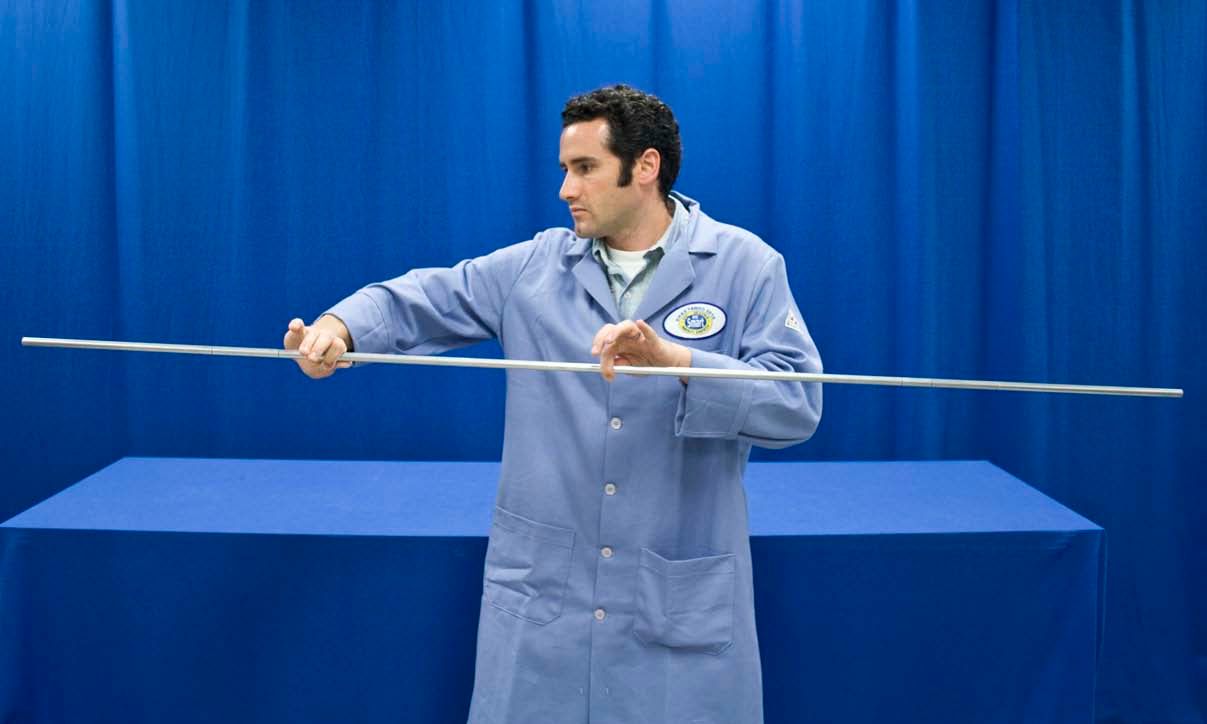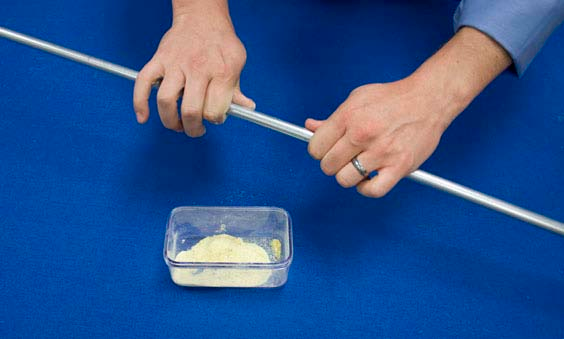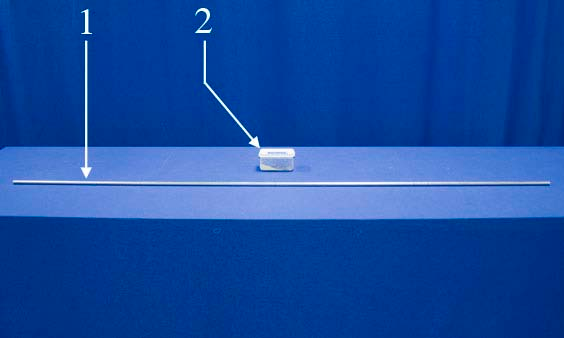


Concept
When the rod is stroked, longitudinal vibrations are generated and the resulting standing waves are subject to the same open-end boundary conditions as in an organ pipe. Thus,
$$L=n\frac{\lambda}{2} \text{ , } n=1,2,3,...$$
where $L =$ bar’s length and $\lambda =$ wavelength. The resonant frequencies $f_n$ are thus given by
$$f_n = n \frac{\nu}{2L} \text{ , } n=1,2,3,...$$
where $v =$ speed of sound in aluminum $= 5.1 \cdot 10^3 m/s$ and $L =$ 1.82 m.
If the rod is firmly held and stroked at $L/2$, $L/4$, and $L/6$, the corresponding audible frequencies are 1.4, 2.8, and 4.2 kHz. Additionally, when the rod is supported at the two locations between $L/4$ and $L/6$, and then excited, transverse, non-sinusoidal standing waves can be clearly observed
Procedure
- Pinch the rod between two fingers at the pre-marked $L/2$ location.
- Apply a small amount of rosin to your other hand and slowly but firmly stroke the rod, starting at $L/2$ and continuing to the rod’s end. It may require some practice to make the rod sing loudly.
- Notice the frequency excited in the rod. Place the cup at the rod’s end to amplify the longitudinal vibrations.
- Repeat steps 1-3 while pinching the rod at the $L/4$ and then $L/6$ marks to excited other resonant frequencies.
- Pinch the rod with both hands at the marks between $L/4$ and $L/6$ and hit it against your knee to excite the transverse, non-sinusoidal standing waves.
Equipment
- Aluminum Rod (1.82 m)
- Rosin Powder
- Plastic Cup (upon request, notpictured)